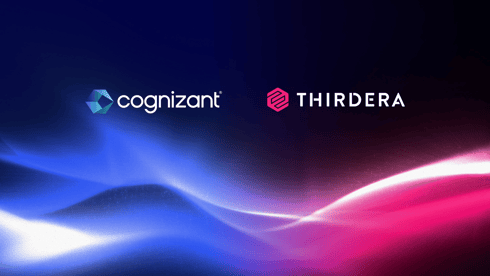Surviving Windows 10 End of Support with...
The clock is ticking for organizations still running Windows 10. Microsoft has announced that Windows 10 will reach its end of support on October 14, 2025, meaning no more...
Read MoreThirdera generates transformation, digitization, and automation for our customers at the speed of NOW.
We help organizations adopt better patterns of work and get more from ServiceNow. Our team unlocks enterprise potential to elevate experiences across the world of work.
We help organizations adopt better patterns of work and get more from ServiceNow. Our team unlocks enterprise potential to elevate experiences across the world of work.

Exciting news! Thirdera and Cognizant Awarded Three ServiceNow Partner Specializations
Read more.jpg?width=500&height=276&name=filter%20group%20of%20people%20at%20desk%20laptop%20laughing%202021-10%20(1).jpg)


Insurance Provider Projects $75MM Gain in Business Value from Asset Management Transformation
Read more-1.jpeg?width=500&height=276&name=Indiana%20Department%20of%20Transportation%20Case%20Study%202023-03%20(3)-1.jpeg)
Government Agency INDOT Modernizes Its Constituent Service Model with CitizenKey
Read more.jpg?width=500&height=276&name=Multichannel%20pipette%20tips%20reaction%20mixture%20plastic%20wells%202022-05%20(1).jpg)

Balancing mission-driven goals with operational efficiency requires innovative solutions that can streamline processes, and enhance program delivery without straining budgets.

UN Agencies Rely on Thirdera and ServiceNow to Support the Ukrainian Aid Response
Read moreDigitize and automate workflows to enhance the customer experience, online and in-store.

.jpg?width=500&height=276&name=Servers%20data%20center%20room%20with%20bright%20speed%20light%202022-05%20(3).jpg)
Global SAP on Cloud Leader, Lemongrass, Embarks on Multi-Continent ITSM Overhaul
Read more

Stay up to date with the insights from ServiceNow experts and explore our blogs, news, case studies culture posts, partner updates and more.
Stay up to date with the insights from ServiceNow experts and explore our blogs, news, case studies culture posts, partner updates and more.


The business value of good design makes perfect sense. If customers find it difficult to do business with you, whether online, on their phone, in a physical store, or anywhere else, they’ll go somewhere else where there is less friction in their experience. It’s that simple.
Much of the discussion of the business value of good user experience and user interface centers around the consumer experience. Yet, it’s every bit as much of an employee experience and productivity issue. If you’re not already treating it as such, it’s time to reconsider.
Many of the common means of measuring the relationship between design and business value reflect this reality. A single UI change might dramatically decrease the rate at which customers abandon items in an online shopping cart, for example—long a favorite metric in the e-commerce world.
That same principle is every bit as valid when you shift your focus internally to your own employees’ experience. Poor design in employee tools, processes, and workflows is as much of a top-line and bottom-line issue as it is with customer-facing products and services.
And the design is very much a matter of tangible business value. A McKinsey report on the business value of good design found a high correlation between companies with strong design and superior financial performance.
Firms in the top 25% of the McKinsey Design Index grew revenues—the holy grail of virtually any business—as much as double the rate of their industry benchmarks. They similarly delivered higher total returns to shareholders than peers. Moreover, this correlation held fast regardless of sector—from medical technology to consumer goods to retail banking.
Among that report’s conclusions: The case for prioritizing UX/UI isn’t really about a single product or service, but about the whole of a user’s experience. I believe that’s absolutely true and is also the case for your employee experiences as well—yet too many organizations aren’t applying this same kind of thinking to their internal systems and workflows.
In fact, it seems many companies tend to take an “It ain’t broke, don’t fix it” approach to internal applications and workflows. However, they’d be better served thinking along the lines of: “It’s probably broken, so let’s fix it.” That sounds harsh, and it’s unlikely all of your tools and processes are actually broken. But are they optimal? Probably not—and ignoring good design as it relates to your employees’ experience may be one of the root causes.
Design thinking in internal workflows and employee experience has never been more important. The proliferation of remote and hybrid work has magnified the already massive role digital tools and processes serve in our businesses today. We (rightfully) invest great urgency in digital transformation and modernization of businesses across industries—but to truly do so means redesigning and optimizing how the people inside those businesses get work done.
One of the best ways to ferret out the impacts of poor UX/UI (or simple inattention to UX/UI, which can be just as harmful in an organization) is to identify friction points wherever they exist. Your focus should be on identifying repetitive tasks in your end-to-end workflows, the flow of duplicate data between people and/or systems, and the responsiveness to customer requests or issues. While these are obvious areas where design issues may occur, technical, cultural, and other factors may also play major roles. All of these can be alleviated through UX/UI improvements.
This is for much the same reason that an e-commerce business cares about abandoned carts, conversions, and other metrics. Similar metrics can be borrowed for your employees as well. For example, if employees find it difficult or frustrating to use a particular tool or complete a workflow/task, they’re more likely to abandon it. At a minimum, it’s going to take them longer to complete the work. Ultimately, strong design should be considered a foundation for optimizing productivity, employee experience, and satisfaction.
Optimal employee experiences and workflows don’t just mean creating a self-service portal and directing people to it. Design thinking needs to permeate all aspects of employee workflows and experiences.
If you’re working on a consumer brand, then you almost certainly prize aesthetics. But good design in employee tools and workflows does not necessarily mean beautiful design, but perhaps beautiful functionality.
I believe the strongest UX/UI decisions are those that make it easier for people to do their jobs. Good design creates intuitive experiences that reduce training time, support requests, and boost satisfaction/efficiency.
Simple changes to UX/UI can generate quick wins which can increase employee adoption. Increasing adoption can create a larger opportunity to achieve long-term business value and return on investment and can improve employee satisfaction.
In summary, there is the tangible business value behind your employees’ experience. Prioritizing experience through good UX/UI design can help remove constraints and digital bottlenecks in your business and improve the way your employees work.
This article was originally published by The Fast Company Executive Board on 8/12/2022.
The clock is ticking for organizations still running Windows 10. Microsoft has announced that Windows 10 will reach its end of support on October 14, 2025, meaning no more...
Read MoreAs organizations continue to embrace remote work, managing hardware assets efficiently has become more important than ever. Traditional IT asset management (ITAM) practices often...
Read MoreCognizant and Thirdera are proud to announce our selection as the winner of five ServiceNow Partner of the Year awards, including three at the Worldwide level. This recognition...
Read MoreOne of the most exciting advancements with AI is the shift toward Agentic AI—AI that not only responds to user inputs but takes proactive actions to achieve a goal. Unlike...
Read More